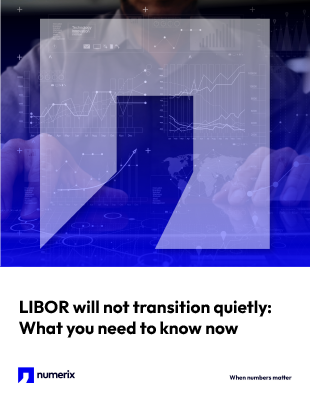
white paper
LIBOR Will Not Transition Quietly: What You Need to Know Now
Entrenched in the markets since 1986, LIBOR is currently tied to approximately $400 trillion of financial contracts for derivatives, bonds, mortgages, and retail and commercial loans. Because of its huge embeddedness in the capital markets, the shift to the selected risk-free rates could very possibly be the greatest challenge facing financial institutions today.
In this Q&A, Numerix’s Liang Wu, Vice President, Financial Engineering, and Head of CrossAsset Product Management, addresses the following:
- The immensity of the transition effort from the IBORs to the RFRS
- The characteristics of the RFRs
- Considerations for RFR curve building and valuation modelling
- RFR liquidity issues
- The IT challenges associated with the transition

